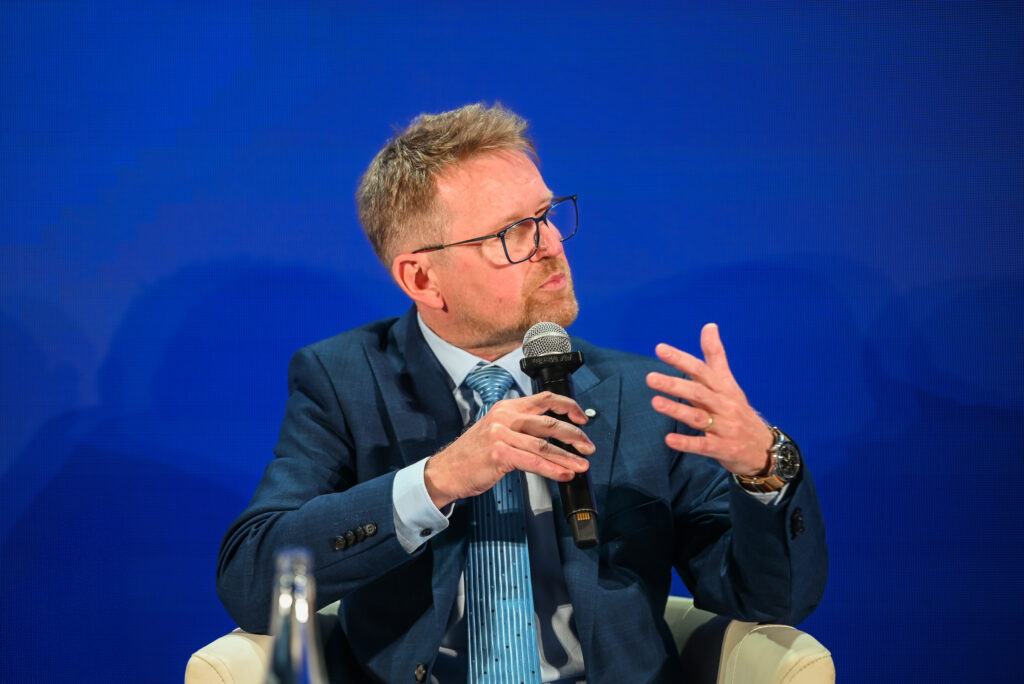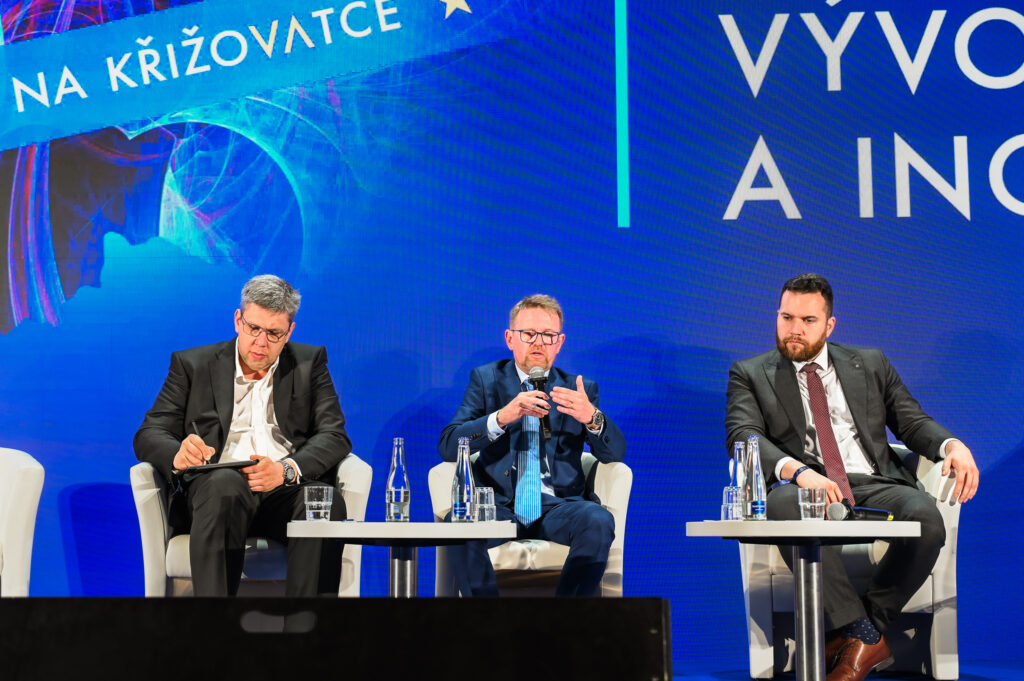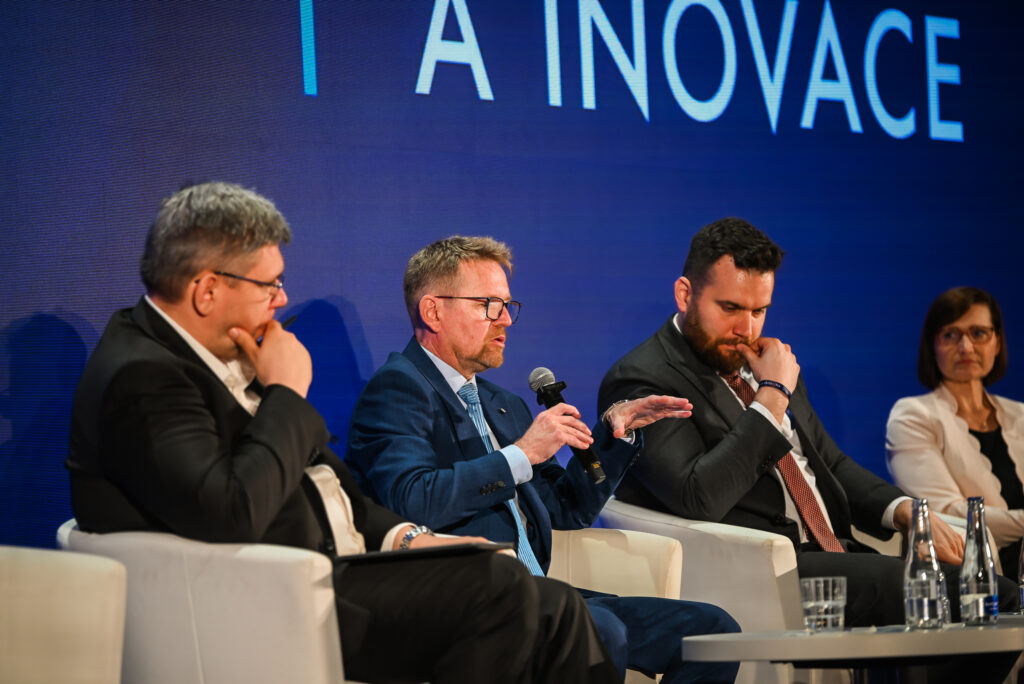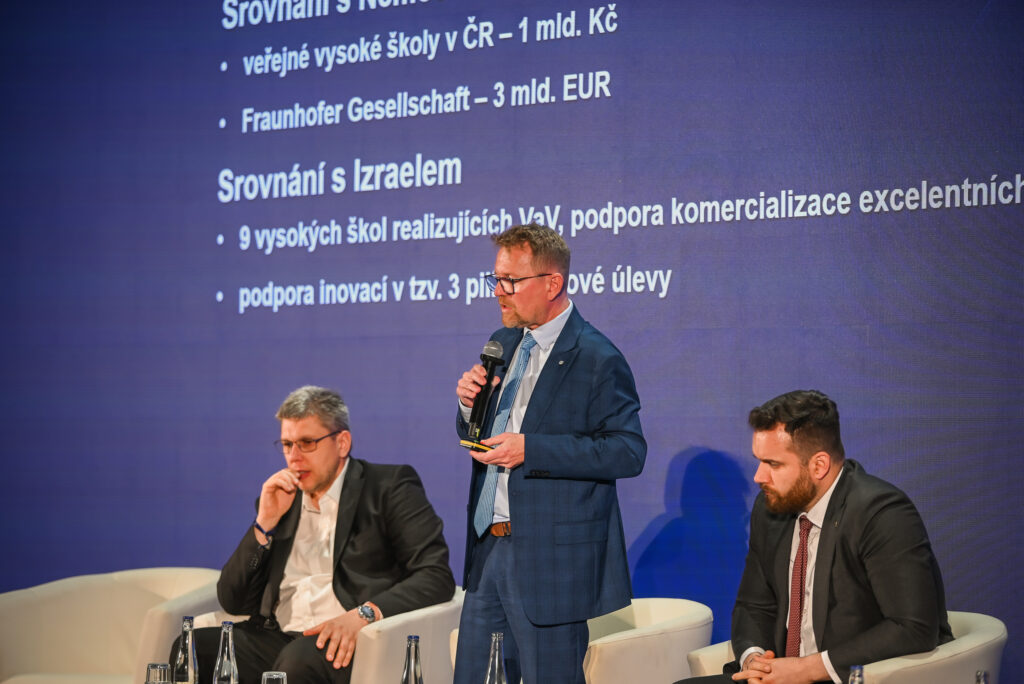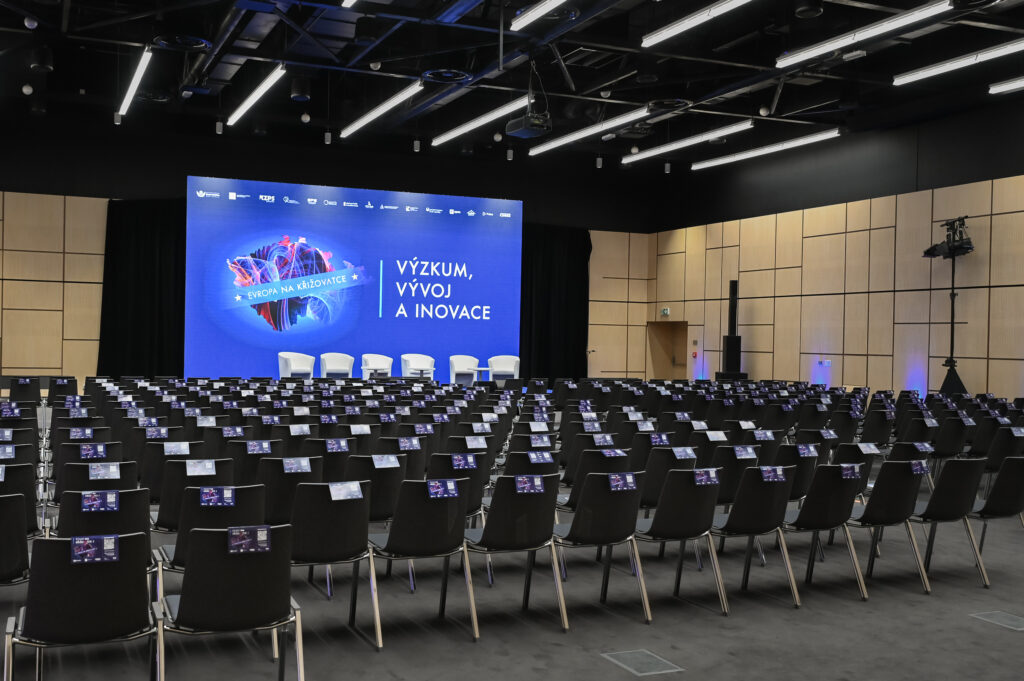“Česko na křižovatce”: Radek Zbořil contributed to the discussion on which way to go
The aim of the “Česko na křižovatce” conference was to highlight the long-term issues hindering the Czech economy and to identify both risks and opportunities. The event took place on 16 April in Prague, with the participation of politicians, business leaders, and employers’ organisations. The physical chemist Radek Zbořil from CATRIN, Palacký University, participated in the programme block focused on research, development, and innovation. In addition to evaluating the current situation, he also proposed possible solutions.
In the discussion panel—also featuring the Deputy Minister for Science, Research and Innovation Pavel Doleček, the Member of the Board of Directors of the Confederation of Industry of the Czech Republic Petr Jonák, and the Chairwoman of the Health and Social Services Section of the Chamber of Commerce of the Czech Republic Eva Karásková—Professor Zbořil referred to the so-called European paradox. This refers to the fact that although the EU is a global leader in scientific output, producing nearly a quarter of all high-quality scientific publications, it still lags behind in valorising these results and transferring them into practice.
“The problem has both quantitative and qualitative dimensions. If we look at countries that invest the most in science and research—such as Israel, South Korea, the USA, or Japan—they are also clear leaders in technology transfer and the valorisation of scientific and research outcomes. All of these countries invest over three percent of their GDP in science and research; Israel even exceeds five percent. The Czech Republic, with 1.8 percent, falls below the EU27 average of 2.2 percent,” said Zbořil.
On the other hand, it should be acknowledged that since 2007, the Czech Republic has made significant investments in all key pillars necessary for conducting cutting-edge research and facilitating technology transfer. Unique infrastructure was created under the Operational Programme Research and Development for Innovation (OP R&D&I); education and scientific excellence have also received considerable support through the Operational Programmes Research, Development and Education, and the Johannes Amos Comenius Programme. The Technology Agency of the Czech Republic has substantially supported technology transfer through its Centre of Competence and National Centres of Competence programmes.
“Nevertheless, we still lag far behind most European countries in the valorisation of research, effectively fulfilling the European paradox. If we examine the share of income from non-public sources at Czech universities and institutes of the Czech Academy of Sciences, we rank at the bottom in Europe. This clearly doesn’t reflect the overall quality of our research or the investment made in this area. For instance, the total income from contract research at all Czech public universities amounted to around one billion CZK in 2023, while Germany’s Fraunhofer Society recorded an income of about three billion euros—almost two orders of magnitude more,” pointed out Zbořil.
One of the reasons, he said, is the fragmentation of science and research in the Czech Republic, where there are over 50 institutes under the Czech Academy of Sciences and 26 public universities. In contrast, Israel—with a similar population—has only nine universities, all focused on research and development and generating significant revenues from commercialisation. Furthermore, Israel has managed to overcome the well-known “valley of death” in technology transfer by focusing on the commercialisation of top-tier research outcomes.
“As I said at the conference, I see three key tools that could improve the situation. The first is the creation of a platform to support disruptive innovations in the Czech corporate and research sectors, with joint investment from the state and companies in R&D. This could serve as an alternative to TA ČR and MPO programmes. Such a platform would introduce classic market competition into the Czech R&D funding system, where companies carefully select their partners and decide in whom and why to invest significant capital, despite the high level of risk. Simultaneously, the state would support these key innovations, reducing the capital risk for the corporate sector. Supporting innovations in the so-called third pillar—those with the highest added value capable of radically transforming or creating new markets—is, in my view, absolutely essential,” Zbořil stressed.
According to him, while these innovations carry the highest risk, it is crucial to ensure that successes like the development of antiviral substances at the Institute of Organic Chemistry and Biochemistry become examples of best practice, not rare exceptions.
The second tool, he said, should be support for the development of professional companies specialising in R&D commercialisation, where technology transfer is handled by true experts.
“Universities and institutes of the Czech Academy of Sciences must learn to procure these services and acknowledge that their own units—typically science and technology parks—often lack the necessary expertise. This investment would pay off many times over and significantly aid research valorisation in the Czech Republic,” added Zbořil.
The final tool, in his view, is the introduction of tax incentives and breaks for companies engaged in research and development.
The conference was opened by the Prime Minister Petr Fiala, who discussed the Czech Republic’s position within the European economy and related government measures with entrepreneurs. Other notable participants included cabinet ministers, the President of the Chamber of Commerce of the Czech Republic Zdeněk Zajíček, the President of the Confederation of Industry of the Czech Republic Jan Rafaj, and other key figures from both the public and private sectors. More information is available at https://www.ceskonakrizovatce.cz/
Photos source: Czech Chamber of Commerce
